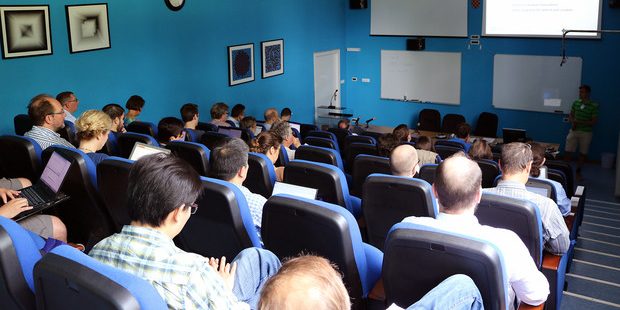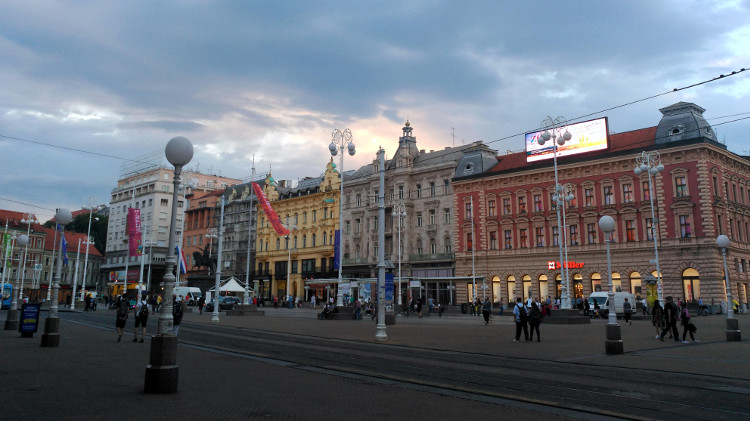
Last week our group member Marc Eixarch and his supervisor Stephan Mohr from the Material Science Group at the Computer Applications in Science and Engineering Department of BSC participated at the Fusion Material Modelling meeting in Zagreb, organized by EUROfusion under the Work Package WPMAT-IREMEV and held by the Croatian Fusion Research Unit. This meeting had the objective of sharing the new results on radiation damage in fusion materials.

In fusion reactors, high-energy neutrons are produced in nuclear reactions between fusion fuel particles. These neutrons, when colliding with the material wall of the reactor, can cause damage. The main goal of WPMAT-IREMEV is to understand and evaluate how different materials (pure elements or alloys) behave under irradiation in order to assess their viability to be used in a future fusion device.

At the meeting Marc and Stephan gave a talk entitled “Linear scaling DFT simulations for large systems – application to vacancy defects in W” where they presented our new results on linear scaling Density Functional Theory (DFT) calculations for metals using the BigDFT code. In particular, we have analyzed the formation energy of a specific radiation defect (single vacancy) in Tungsten, an element that could be used for the first wall thanks to its good properties under irradiation. Understanding of such vacancies both qualitatively and quantitatively is a key point of fusion materials research, since even very small defects could evolve over time into big clusters of defects and eventually change the microstructure of the material.
